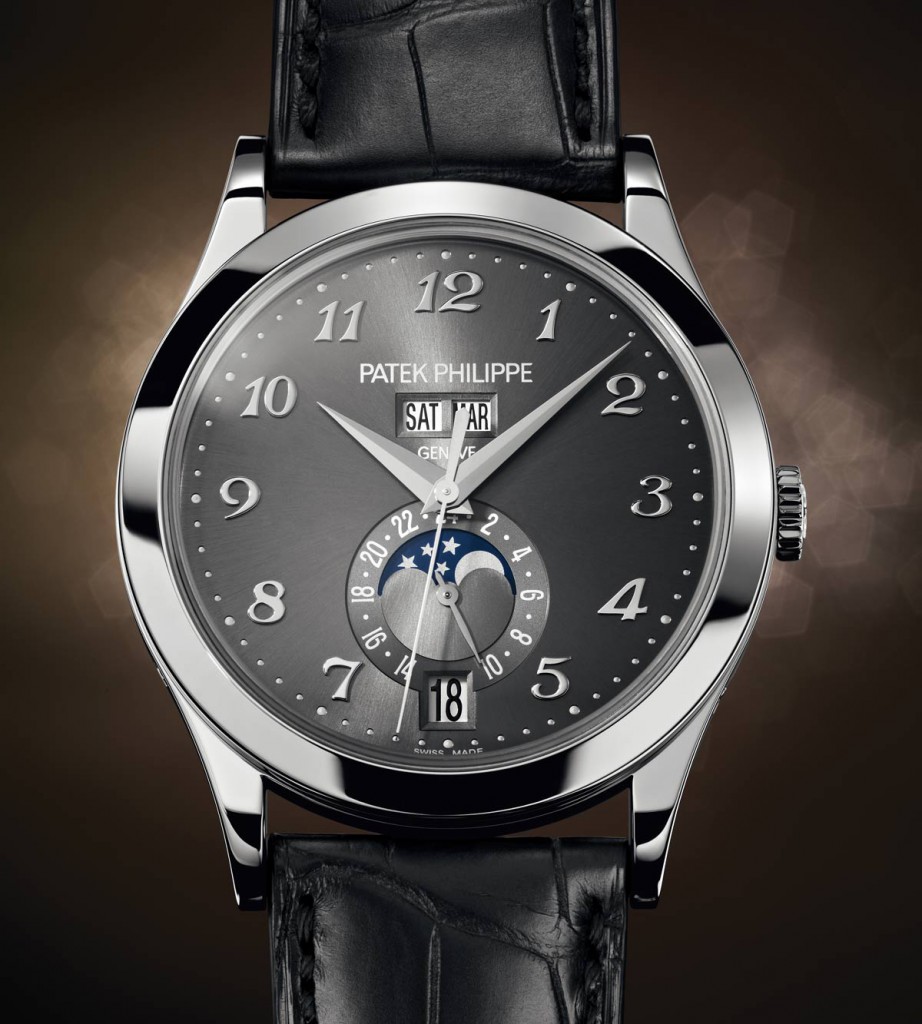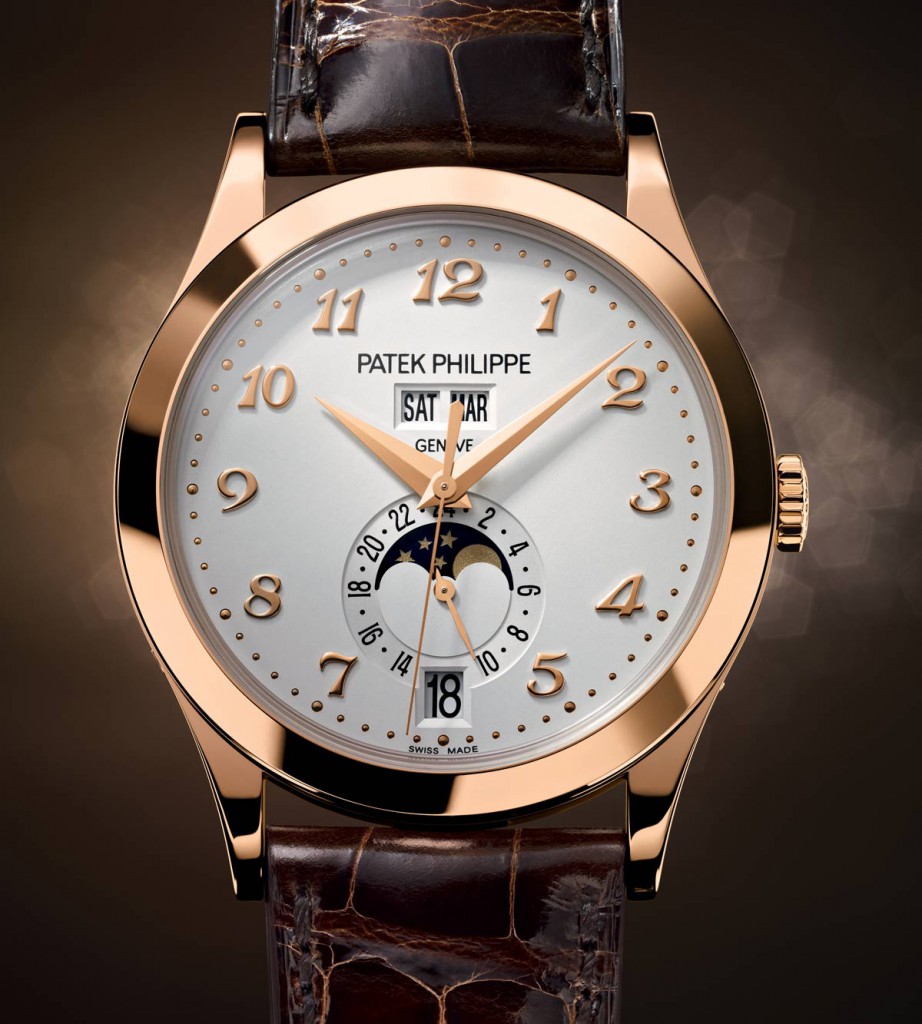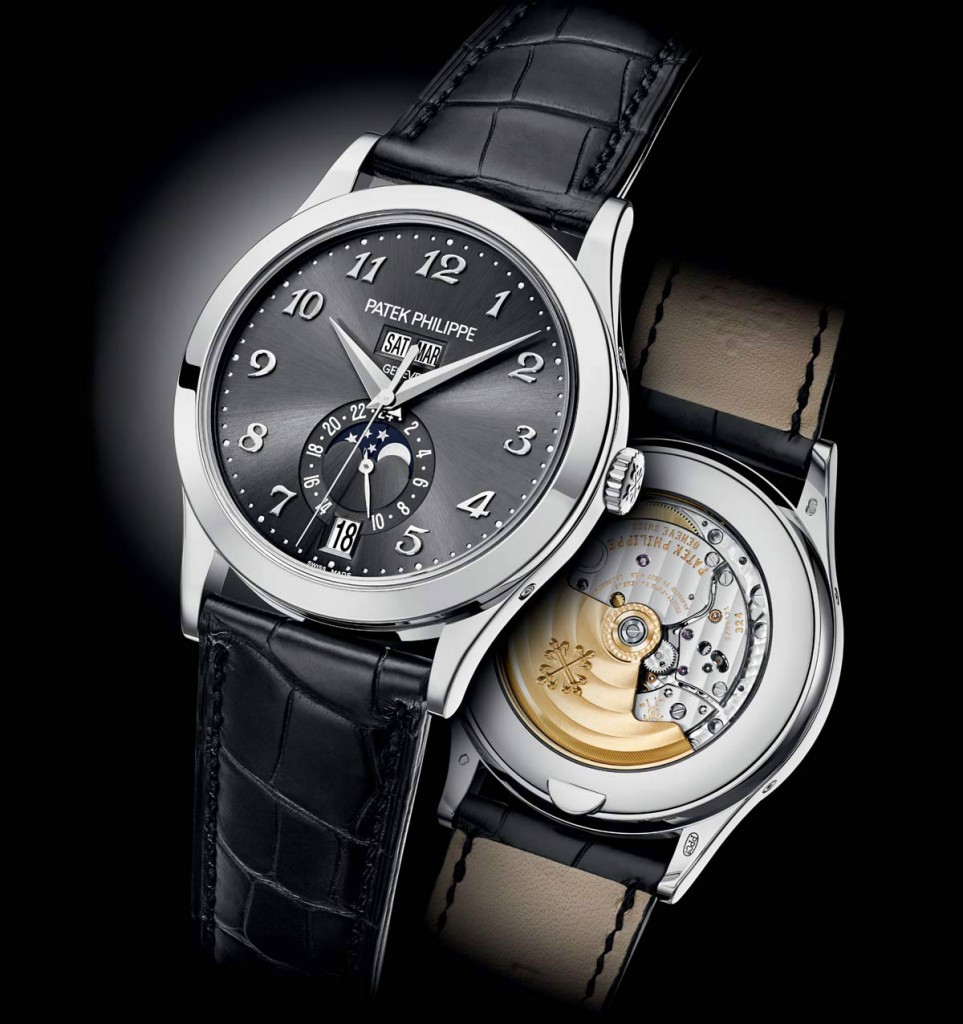By Harlan Chapman-Green
This year Patek unveiled, among many other interesting things, the new Annual Calendar featuring the reference 5396, this is a direct descendent of the original Annual Calendar Reference 5035 watch which Patek showed back in 1996. That watch was the first ever to utilise the new complication Patek had created, the Annual Calendar system.
There’s a total of four types of calendar watches you’re most likely to see around (there are more than this but these are rare and complex to make). The first is the most common by far, the simple date wheel can be incorporated into pretty much any design and adds a touch of practicality, it can also to improved by a big date mechanism which uses two date wheels to display the date. The second type of calendar system is more of an advancement on the simple date complication, the day-date offers the display of both the name of the day and the numerical date and is epitomised by the Rolex Day-Date, the watch we know and love as the Rolex President. The third is a big step up from the relatively simple date and day date complications, the annual calendar was first developed by Patek as a way of making a wristwatch with a calendar that they could sell for less. The annual calendar knows how long 11 of the 12 months are and advances the date accordingly on the display, meaning you only need to adjust it once a year on the 28th of February. The final type of calendar is the perpetual calendar. Often paired with a moon-phase indicator, the perpetual calendar factors in leap years and knows exactly how long February is, so as long as you keep it ticking it’s unlikely you’ll ever have to adjust it much.

The new Patek Philippe Annual Calendar Reference 5396 watch offers some of Patek’s latest design cues such as a flatter, angled bezels as opposed to the more rounded and stepped designed that were used in the early naughties. The user-friendly complication on this watch celebrates its 20th anniversary this year with over 20 different models with different case and dial combinations in use. The classic 38.5mm case used here comes in rose gold with an opaline white dial or white gold with a dark grey sunburst dial, naturally, both are 18K gold cases, what else?

The Breguet numerals used on the dial stand out rather well and help to draw the eye away from the cluster in the centre of the watch. There’s the 24-hour subdial, nestled inside which is a moon phase indicator. There’s also a date window at the bottom of that and the day and month windows are sandwiched between the hands and the Patek Philippe name above the centre.

The hand-finished movement inside this watch is on display on the reverse of the case and bears the Seal of Patek Philippe. It’s also got a 21K gold rotor to it to help distinguish from the silver colour of the movement itself. The watch will run for around 45 hours before needing to be rewound again, but honestly, the people who buy these types of pieces have already invested in one or several winders.
You can pick up this little gem of a dress watch which features a great subtle complication for 42,300 Swiss Francs in either rose or white gold, so why not spoil yourself, it is a Patek, after all. For more info, please visit patek.com

HARLAN CHAPMAN-GREEN – MANAGING EDITOR
A keen bass guitar player, Harlan enjoys all the perks modern watchmaking technologies the industry has to offer. Although you might catch him sampling Omegas or the “odd” Rolex, Harlan loves all things Haute Horology, with his three favourite brands being Breguet, A.Lange & Söhne and Vacheron Constantin. He hopes to study timekeeping more in depth someday and will never be able to thank his father enough for introducing him to the industry. You can follow him on Instagram Read his articles here



